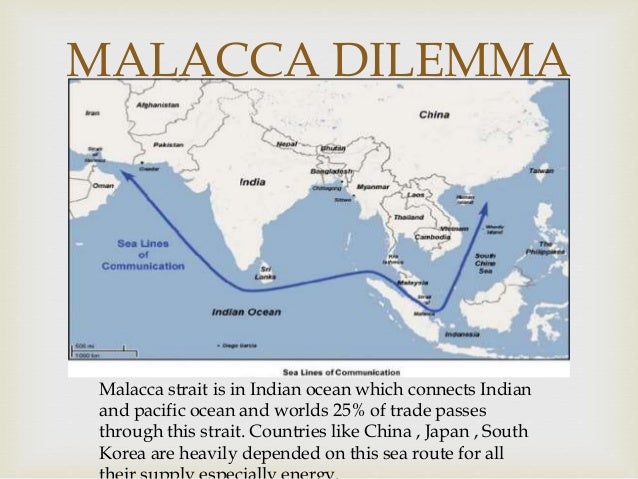Context:
• In the wake of China’s behaviour on our northern border, India needs to look carefully at other areas of potential conflict.
The Indian Ocean is an obvious one. In his keynote address at the Shangri-La Dialogue in Singapore in June 2018, our prime minister presented India’s Indo-Pacific vision.It is rooted in our historical associations with this region, and our understanding of its seminal importance in building prosperity in this century.
The clarity of our approach was captured thus: “Inclusiveness, openness and ASEAN centrality and unity, therefore, lie at the heart of the new Indo-Pacific. India does not see the Indo-Pacific Region as a strategy or as a club of limited members. Nor as a grouping that seeks to dominate. And by no means do we consider it as directed against any country.”
China and Indian Ocean:

• China is not a littoral state in the Indian Ocean. Nor, historically speaking, did it have a naval presence.
• This by no means suggests that China did not play an important part in Indian Ocean trade.
• It is to merely posit that such trade, especially beyond the Malacca Straits, was mainly carried on by Arab, Indian and Persian traders.
• Nonetheless, in today’s context, China is the second largest economy and the world’s largest trading nation.
• The sea-lanes of communication in the Indian Ocean are vital to her economy and security.
• China should have equal access under international law and in accordance with international practice.
• China could have been expected to welcome the Indo-Pacific approach which gives her both legitimacy and respect in the Indian Ocean.
• She has, instead, opted to undermine it.
• China now alleges that this is an American-led plot to “contain” China’s rise.
China’s “Malacca Dilemma”:

• After the founding of the People’s Republic in 1949, China was initially focussed on the consolidation of the “homeland”.
• Its horizons broadened as its economy went global, and the consequent challenge was encapsulated by President Hu Jintao in November 2003 to party cadres as China’s “Malacca Dilemma”.
• They imagined that others would block the Malacca Straits to “contain” the Chinese.
• From that point forward, China has strategised to dominate not just the Malacca Straits, but the ocean beyond it.
• The PLA Navy (PLAN) made its first operational deployment in the Gulf of Aden in 2008.
• In December 2009 retired PLAN Admiral Yin Zhuo referred to a possible overseas base or facility.
• In 2010 a China State Oceanic Administration report alluded to plans to build aircraft carriers.
• By 2012 China was ready to make the move into the Indian Ocean.
• A Maritime Rights and Interests Leading Group was established inside the Communist Party.
• The Report to the 18th Party Congress in the same year saw the first official reference to “building China into a sea-power nation”.
• The plan was presented as the 21st Century Maritime Silk Road in Jakarta in October 2013, carefully wrapped in terms of trade and finance, in order to disguise its dual purpose.
• In May 2014 three Chinese researchers affiliated to the China Naval Research Institute laid out the real game-plan in their article, “The Strategic Scenario in the Indian Ocean and the Expansion of Chinese Naval Power”.
Challenges to the Chinese Plan:

• Acknowledging that US hegemony and India’s regional influence in the Indian Ocean posed challenges to the Chinese plan, the authors laid out the inherent deficiencies that China needed to overcome, namely that
o it is not a littoral state;
o its passage through key maritime straits could be easily blocked; and
o the possibility of US-India cooperation against China.
They suggested that these deficiencies might be overcome by:
• To carefully selecting sites to build ports — Djibouti, Gwadar, Hambantota, Sittwe and Seychelles were specifically named;
• By conducting activities in a low-key manner to “reduce the military colour as much as possible”; and
• By not unnerving India and America by cooperating at first, then slowly penetrating into the Indian Ocean, beginning with detailed maritime surveys, ocean mapping, HADR, port construction and so on.
• The Chinese have moved precisely along those lines.
Dual use:
• The official establishment continues to deny that the BRI has military or geo-strategic intent.
• A Chinese scholar at Jiao Tong University has recently acknowledged that the dual-use ports are likely to support future projection of military power.
• China has conveniently forgotten its assurance, in the Defence White Paper (1998) that she “does not station any troops or set up any military bases in any foreign country”.
• The PLA’s new base in Djibouti is the prototype for more “logistics” facilities to come.
• More port construction projects that are commercially unviable but have military possibilities, like Gwadar and Hambantota, are being offered to vulnerable countries.
• Chinese “civilian” vessels routinely conduct surveys in the EEZ of littoral states.
• In January 2020 the PLA Navy conducted tripartite naval exercises with Russia and Iran in the Arabian Sea. They have the largest warship building programme in the world.
• The Indo-Pacific idea might potentially derail their carefully crafted plans. It is inclusive, participative and evolving through open discussion; the Maritime Silk Road by contrast is a Chinese fait accompli.
• After initially disparaging the idea, they now wish to cause alarm by raising fears about Great Power “strategic collision” caused by the so-called American-led “containment” strategy.
• This is the classic Chinese ruse of deflecting attention from the real issue on hand, their efforts to dominate the Indian Ocean.
Conclusion:
• It is important to look past their propaganda.
• In September 2019, Vice Foreign Minister Le Yucheng said: “We are firmly against attempts to use the Indo-Pacific strategy as a tool to counter the BRI or even contain China”.
• China still thinks in terms of balance of power while speaking about a Community with a Shared Future of Mankind.
• It should re-consider its position and view the Indo-Pacific idea as an instrument for advancing common interests, and not make it a source of conflict or tension.
For more such notes, Articles, News & Views Join our Telegram Channel.
Click the link below to see the details about the UPSC –Civils courses offered by Triumph IAS. https://triumphias.com/pages-all-courses.php

